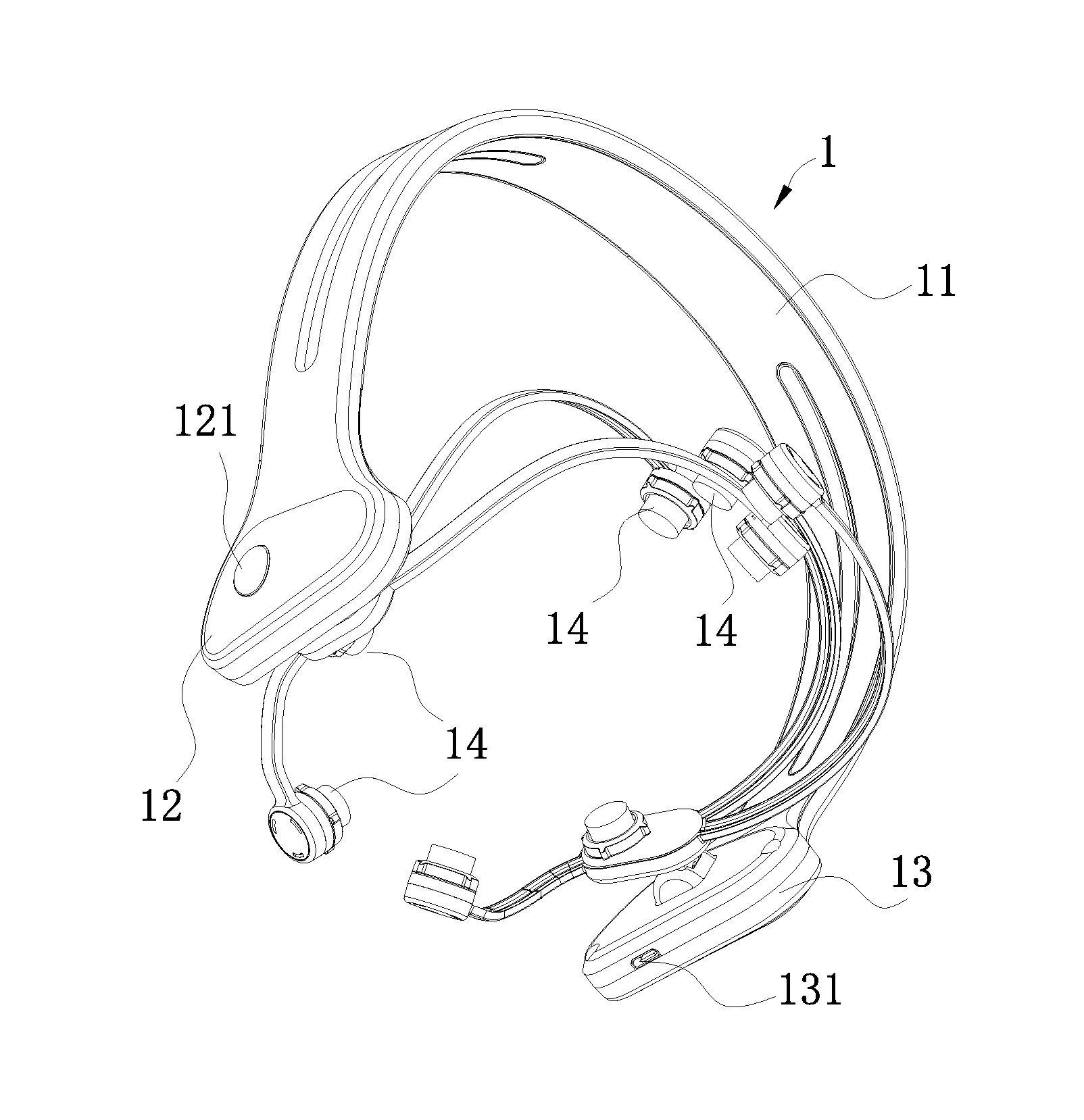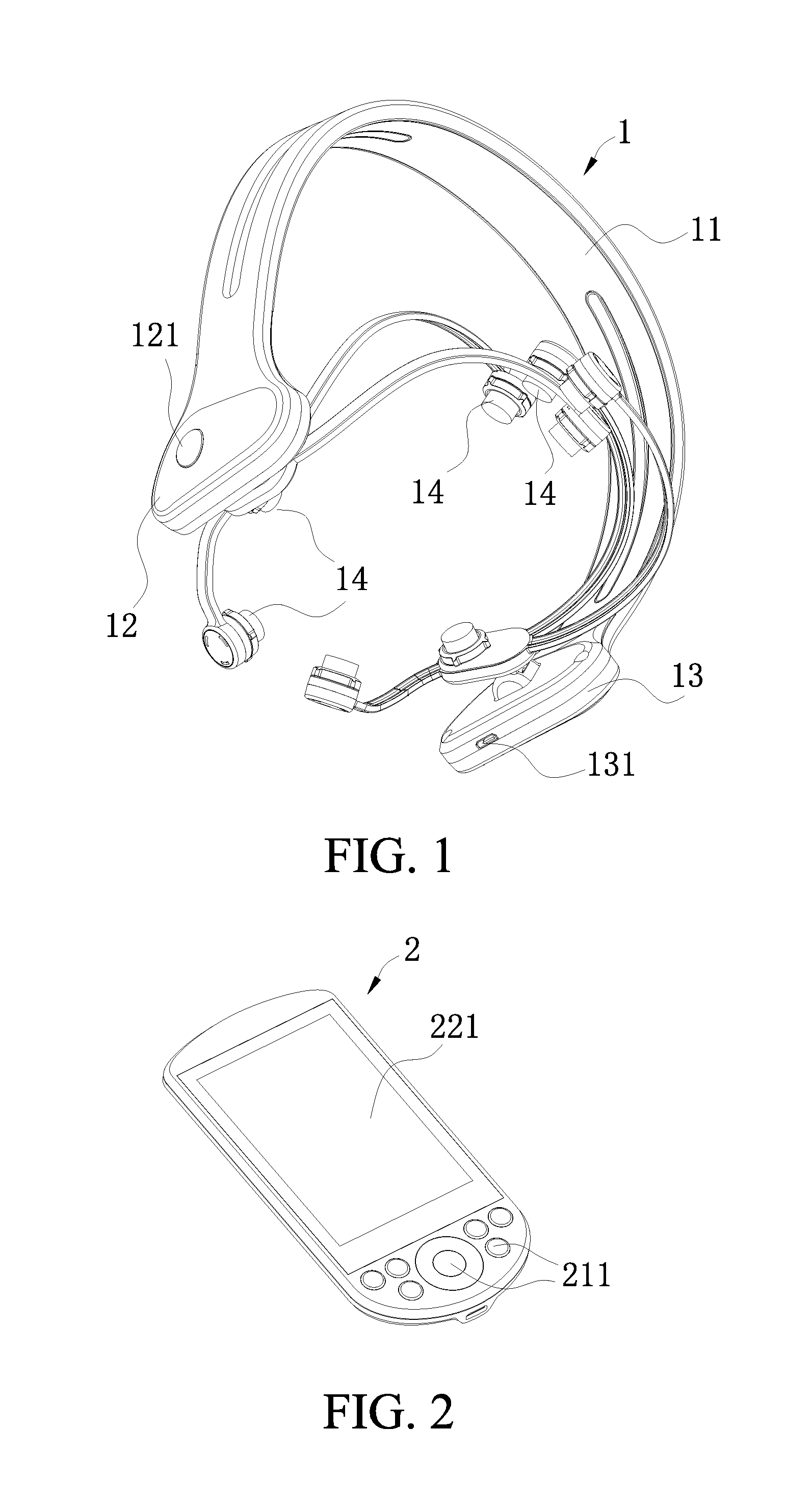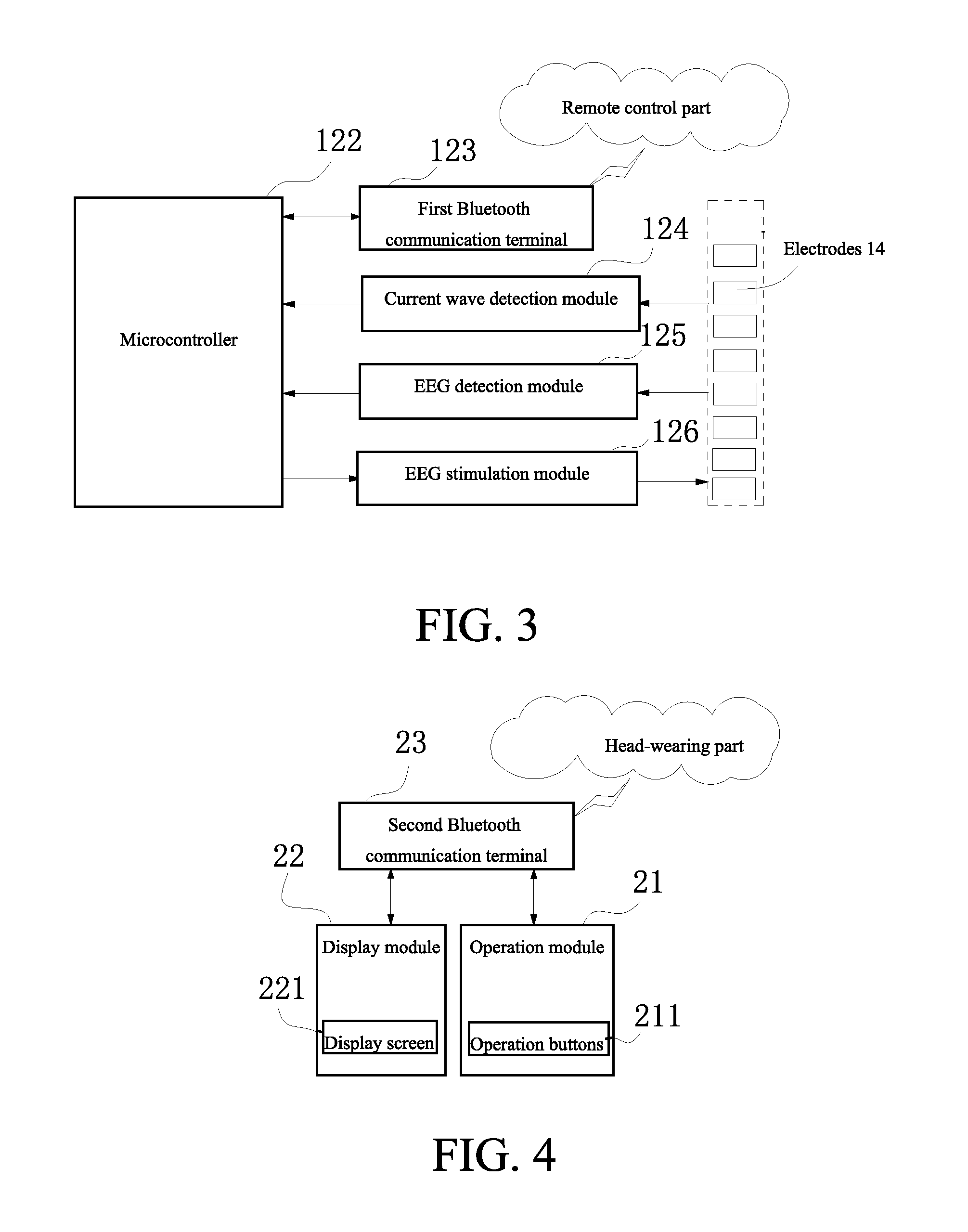Head-wearing wireless control transcranial electrical stimulation device
a wireless control and transcranial electrical stimulation technology, applied in the field of cranial nerve bioelectrical stimulation devices, can solve the problems of increased operation cost, lower overall efficiency, and longer operation time, and achieve the effect of convenient portability and operation
- Summary
- Abstract
- Description
- Claims
- Application Information
AI Technical Summary
Benefits of technology
Problems solved by technology
Method used
Image
Examples
Embodiment Construction
[0028]The present invention is further illustrated with accompanying drawings and a preferred embodiment, in such a manner that one skilled in the art will better understand and implement the present invention. However, the embodiment of the present invention as shown in the drawings and described below is exemplary only and not intended to be limiting.
[0029]Referring to FIGS. 1-4, according to a preferred embodiment of the present invention, a head-wearing wireless control transcranial electrical stimulation device comprises a head-wearing part 1 and a remote control part 2, wherein:
[0030]the head-wearing part 1 comprises an arch-shaped elastic clamper 11; an integrated circuit board (not showed in the figures) which is started by a switch 121 is arranged within a cavity 12 of a first end of the elastic damper 11; a microcontroller 122 which is connected with a first Bluetooth communication terminal 123 is arranged on the integrated circuit board; a power supply 131 is arranged wit...
PUM
 Login to View More
Login to View More Abstract
Description
Claims
Application Information
 Login to View More
Login to View More - R&D
- Intellectual Property
- Life Sciences
- Materials
- Tech Scout
- Unparalleled Data Quality
- Higher Quality Content
- 60% Fewer Hallucinations
Browse by: Latest US Patents, China's latest patents, Technical Efficacy Thesaurus, Application Domain, Technology Topic, Popular Technical Reports.
© 2025 PatSnap. All rights reserved.Legal|Privacy policy|Modern Slavery Act Transparency Statement|Sitemap|About US| Contact US: help@patsnap.com



